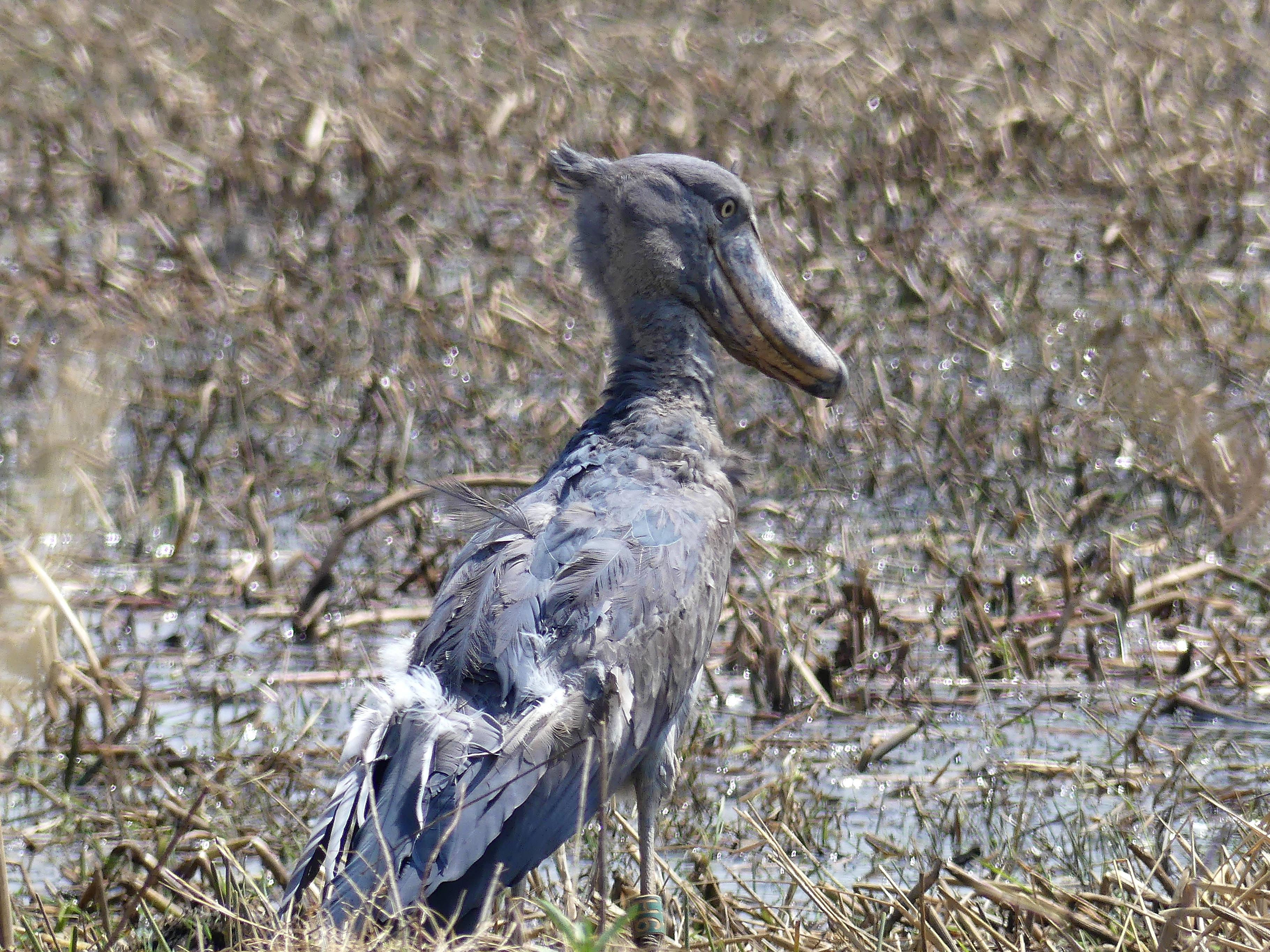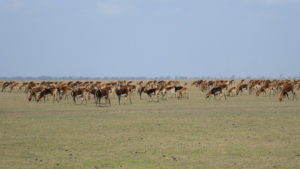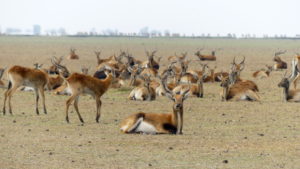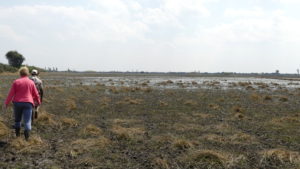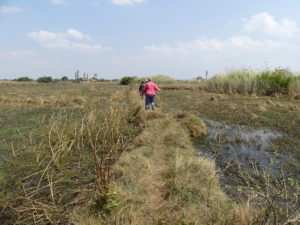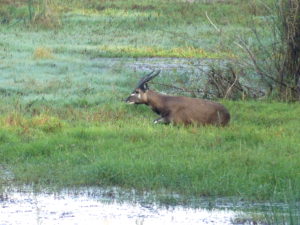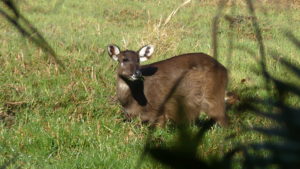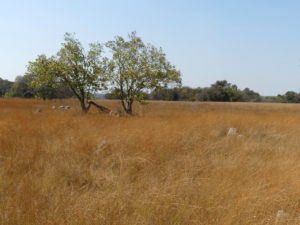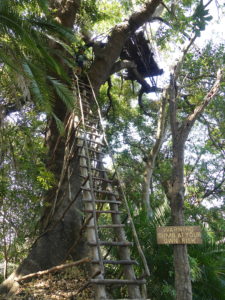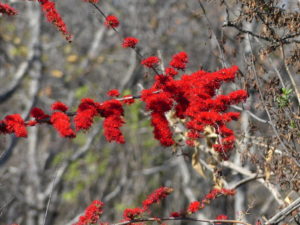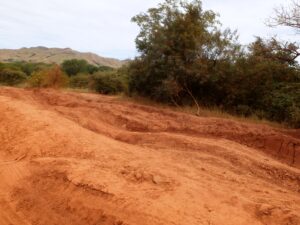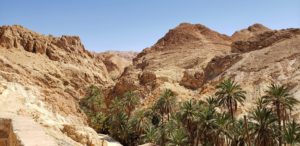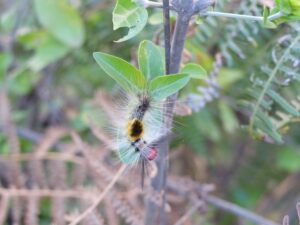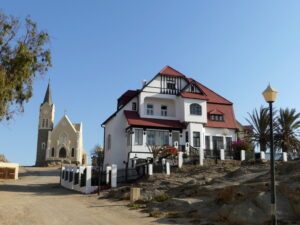We had seen so many large wildlife parks that we chose a few unusual options to finish our tour through Zambia: the wetlands of Bangweulu and Kasanka, both in the central part of the country and both sublime Edenic landscapes.
Bangweulu National Park
We don’t normally make extraordinary efforts to find unusual wildlife, though we love to birdwatch wherever we go. The enormous wetlands region of Bangweulu, Zambia, was one exception, for it is about the only home of the shoebill stork – as well as for herds of swamp-loving black lechwe antelope, who are also endemic to this area.
Even during this dry time, when so much of southern Africa thirsted, the Bangweulu wetlands still offered a watery habitat for birds, along with fisheries for the local villagers and fertile land for growing grains for sale or grasses that nourish wildlife. We drove over an hour to the waters from Bangweulu’s parched edge. On the road, we passed countless small villages that appeared to be thriving from their farming. Many groups collectively pounded grain into powder, hammering it with thick poles. Large flatbed trucks also prowled the narrow dirt road, hauling away the 20 kg sacks left roadside at the family farms.
After the long drive to the wetlands’ edge, a huge herd of black lechwe males filled the horizon, grazing on the flood plains.
Here a relaxed black lechwe chews on the grass of the flood plains among fellow males. The females were deep in the swamps tending to newborns. The black lechwe have oily coats to protect them in water and hooves that are specially adapted for swampy areas (unlike our hooves, err…feet).
But we didn’t quite realize, when we started out from the edge of the wetlands, how tough the trek to see the birds would be: a 90 minute slog each way through dusty stubbly flood plains as well as calf-high boot-sucking mud and swampy ponds – muddy and mucky terrain.
As we neared our shoebill, we also needed to tightrope across narrow dykes that the fishermen build to form the ponds. We were relieved to make a path out of the solid walls. Balancing, however, was a bit tougher than usual after we wearied our legs in the muddy sections.
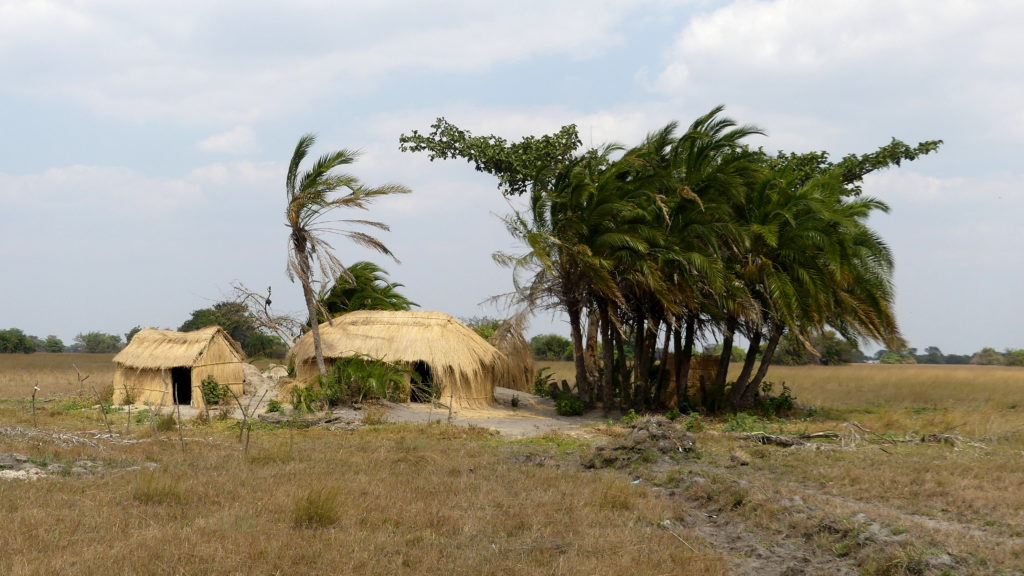
Along the way, we passed several thatched fishers’ huts, which occupy slight, barely noticeable elevations within the wetlands. During the wet season, water completely surrounds these huts.
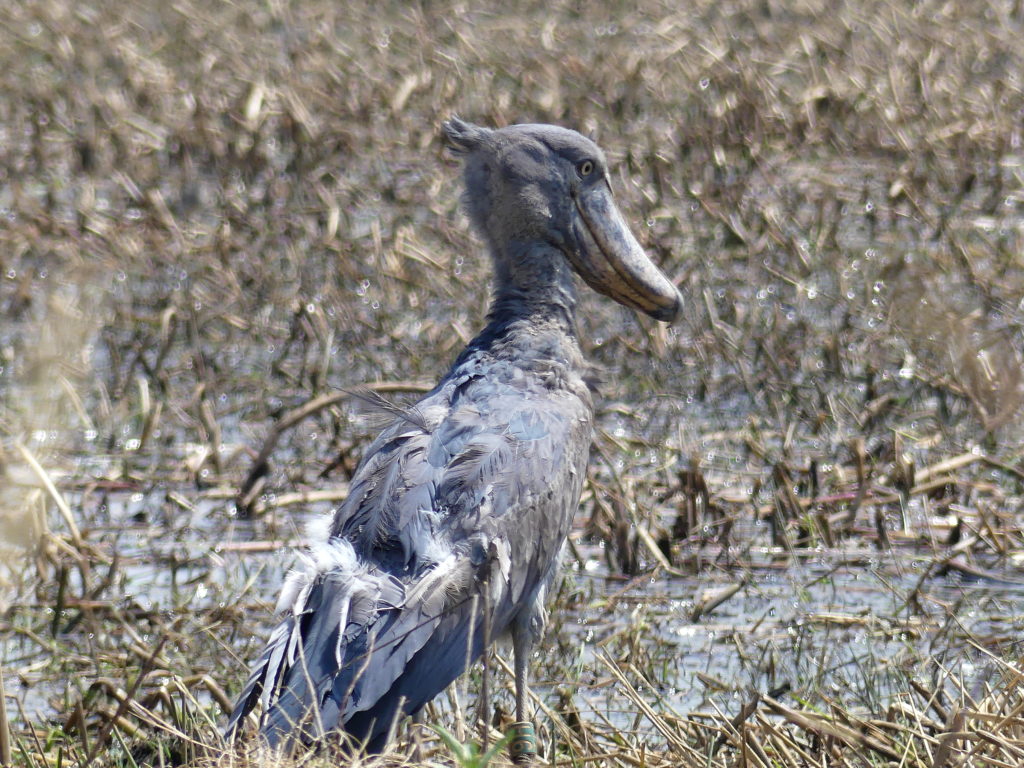
And, after all that, we only saw one shoebill, a find that we later discovered was on many African guides’ bucket list for bird sightings. The large bird’s name – shoebill – comes from the shape of its obviously oversized bill, which can crush a whole codfish before swallowing it. Here is our shoebill stork, perhaps about a meter or so (over 3.5 feet) tall. Some grow taller than 1.5 meters (five feet), weigh as much as 7 kilograms (15 lbs), and have wings up to 2.5 meters (eight feet) wide. Big bird indeed.
Just as interesting, we thought, was our masterful guide, Brighton, a man passionate at his job, and one who is working hard on the challenges of balancing tourist interest in this bird, the economic stakes for village fisherman, and wetlands conservation efforts. While we were slogging, we weren’t quite sure the effort was worth the shoebill sighting, but we both felt the overall experience with Brighton was a rich one.
Kasanka
Our second unusual visit in Zambia, after Bangweulu, was another wetlands area called Kasanka, owned and managed by a private trust.
Here too water still pooled and flowed in this dry time, fostering animals we had not seen in Africa such as the endemic, water-loving sitatunga antelope. Here a chocolate-colored male tiptoes through swampy reeds.
So the place to be, in the morning, was at a waterhole, where waterbirds and various kinds of antelope like the sitatunga gathered.
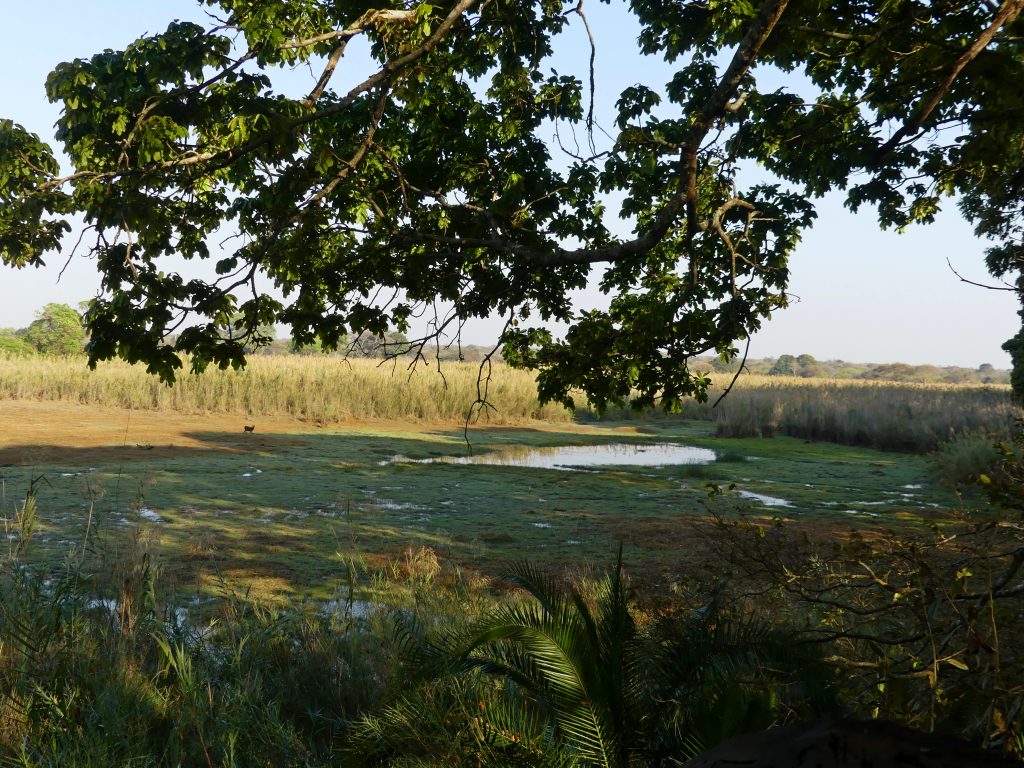
Nearby, a female sitatunga shows off its striking ears.
The waters also nurture grassy flood plains.
On their fringes, acacia trees flourished and termite ants have built countless clay nests just tall enough to peek over typical water levels in the wet season.
We climbed a shorter, rickety ladder like the one in the picture below to a platform with a view over our morning waterhole. But we later respected the warning on this slightly taller, even more rickety one.
Kasanka was a beautiful, serene place to visit. We stayed on the dry outskirts of the watery park in small bungalows that remained quite cool under the hot sun.
To access internet, we walked 10 minutes away to a dried pool and stood on a rock which miraculously channeled signal – off and on – to our phones. A Peace Corp volunteer at Kasanka showed us that trick.
In other months, however, visitors throng here to see 10 million fruit bats fill the morning and evening skies.
(To enlarge any picture above, click on it. Also, for more pictures from Zambia, CLICK HERE to view the slideshow at the end of the itinerary page.)


